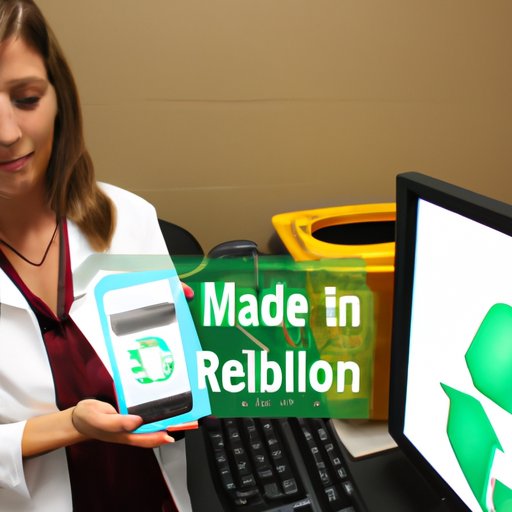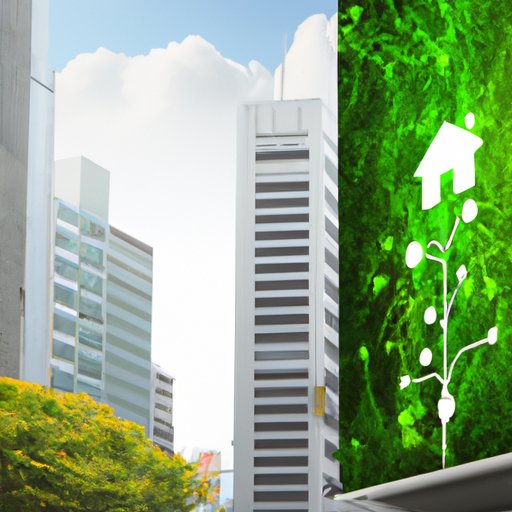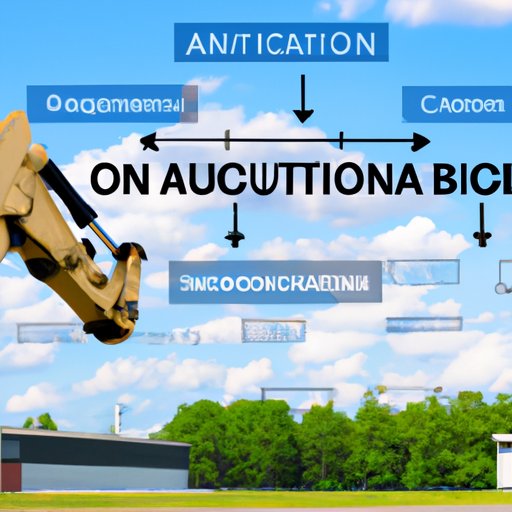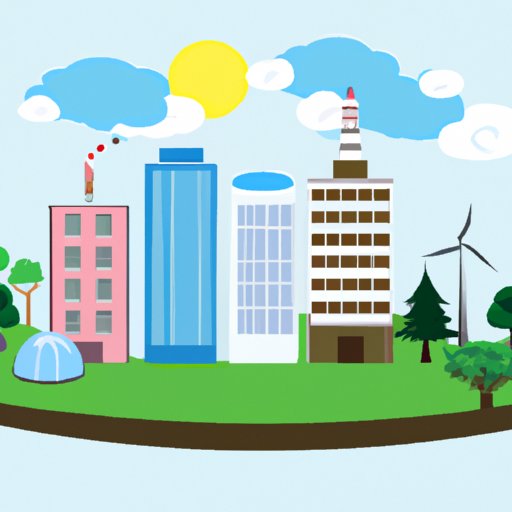Introduction
Technology has long been seen as a source of environmental destruction. However, it is also an essential tool in our fight against climate change. Technology can be used to reduce carbon emissions, promote renewable energy sources, and make our cities more sustainable. In this article, we will explore how technology can help the environment and the challenges associated with implementing such solutions.
Exploring the Use of Renewable Energy Sources
Renewable energy sources are one of the most promising solutions for protecting the environment. These sources include solar, wind, geothermal, biomass, and hydropower. According to the International Renewable Energy Agency (IRENA), renewable energy sources account for more than 25% of global electricity generation and are expected to grow to nearly 40% by 2030.
Using renewable energy sources has numerous benefits. For starters, they are clean and do not emit any harmful pollutants into the atmosphere. Additionally, they are cost-effective and can save consumers money on their energy bills. Finally, they help reduce our reliance on fossil fuels, which are finite resources.
However, there are some challenges associated with implementing renewable energy sources. One of the biggest challenges is that they require large upfront investments, which can be prohibitively expensive for many consumers. Additionally, some renewable energy sources, such as solar and wind, are intermittent and thus require storage solutions. Finally, there is still a lack of awareness about the benefits of renewable energy sources, which can lead to resistance from certain groups.

Utilizing Technology to Improve Recycling Programs
Recycling is another important solution for protecting the environment. Recycling helps reduce waste and conserve natural resources. There are several types of recycling programs, including curbside collection, drop-off centers, and buy-back centers. Each type of program has its own benefits and challenges.
The benefits of having an effective recycling program include reducing landfill waste, conserving natural resources, and creating jobs. Additionally, recycling can save money by reducing the need for new materials. Finally, recycling helps reduce greenhouse gas emissions by reducing the demand for energy-intensive production processes.
However, there are some challenges associated with implementing a recycling program. One of the biggest challenges is that people need to be educated about the importance of recycling and how to properly dispose of recyclables. Additionally, there is a need for more efficient ways to sort and process recyclables. Finally, there is a lack of infrastructure to support large-scale recycling programs.

Examining the Impact of Smart Buildings and Green Architecture
Smart buildings and green architecture are two innovative solutions for protecting the environment. Smart buildings use advanced technology to reduce energy consumption and save money. Green architecture focuses on designing buildings that are energy-efficient and use sustainable materials.
The benefits of smart buildings and green architecture include reducing energy consumption, saving money, and improving indoor air quality. Additionally, these solutions can help create healthier and more comfortable living spaces. Finally, they can help reduce greenhouse gas emissions by decreasing the need for energy-intensive production processes.
However, there are some challenges associated with implementing smart buildings and green architecture. One of the biggest challenges is the cost of retrofitting existing buildings. Additionally, there is a lack of awareness about the benefits of these solutions. Finally, there is a need for more efficient ways to measure and track energy consumption.

Investigating Ways to Reduce Carbon Emissions Through Automation
Automation technologies are also being used to reduce carbon emissions. Automation technologies, such as artificial intelligence (AI) and the Internet of Things (IoT), can be used to optimize industrial processes and improve energy efficiency. Additionally, automation can be used to monitor and control energy consumption in homes and offices.
The benefits of automation technologies include reducing energy consumption and saving money. Additionally, automation can help reduce greenhouse gas emissions by decreasing the need for energy-intensive production processes. Finally, automation can help improve safety by monitoring and controlling hazardous materials.
However, there are some challenges associated with implementing automation technologies. One of the biggest challenges is the cost of the technology. Additionally, there is a need for more efficient ways to monitor and control energy consumption. Finally, there is a lack of awareness about the benefits of automation technologies.
Developing Solutions for Sustainable Agriculture Practices
Sustainable agriculture practices are another important solution for protecting the environment. Sustainable agriculture practices, such as organic farming and agroforestry, can help reduce water and soil pollution, conserve natural resources, and reduce carbon emissions. Additionally, they can help improve food security by increasing crop yields and reducing food waste.
The benefits of sustainable agriculture practices include reducing water and soil pollution, conserving natural resources, and reducing carbon emissions. Additionally, they can help improve food security by increasing crop yields and reducing food waste. Finally, they can help create jobs and boost local economies.
However, there are some challenges associated with implementing sustainable agriculture practices. One of the biggest challenges is the need for better access to capital and technical assistance. Additionally, there is a lack of awareness about the benefits of sustainable agriculture practices. Finally, there is a need for more efficient ways to monitor and track agricultural production.
Conclusion
In conclusion, technology can be used to help protect the environment. From renewable energy sources to smart buildings and green architecture, there are numerous solutions that can help reduce carbon emissions and conserve natural resources. While there are some challenges associated with implementing these solutions, they are far outweighed by the potential benefits. It is clear that technology can play an important role in our fight against climate change.
Further research should focus on developing more efficient and cost-effective solutions for protecting the environment. Additionally, there is a need for more education and awareness about the benefits of renewable energy sources, recycling programs, and other environmental solutions. With the right technology and the right approach, we can make our planet a healthier and more sustainable place to live.
(Note: Is this article not meeting your expectations? Do you have knowledge or insights to share? Unlock new opportunities and expand your reach by joining our authors team. Click Registration to join us and share your expertise with our readers.)
